


If the staff crossing is situated between the starting point of a train (e.g. a platform) and the first signal of the exit route, the staff crossing signals are activated by the exit route, even though the route does not go through the staff crossing:

If there is an access road between the tracks - or track separation is large for other reasons - the staff crossing is sub-divided, and only relevant signals are activated by a given route:

The examples above can be extended to 3 or 4 tracks.

In this sense, the departure signal acts as a repeater signal for the platform exit signal(s), exit route signal(s), exit block signal(s) or exit signal(s) of the particular track. Thus, the signal is also lit in case of a through route:

This arrangement is almost extinct. Today, agreement on departure is carried out among the train staff using hand signals or flashing lights mounted on the vehicles.
In older days, departure light signals were operated manually as a particular indication of departure permission (similar to the hand signal).
The special application of departure signals as simplified exit signals has ocurred at one or two yards with line access at one end only. The idea is to have only one "proper" platform exit signal, exit block signal or exit signal common to all yard tracks. Mainline tracks are equipped with signals according to standard practices:

There has been at least one example of departure light signals in a station with no exit signals at all.
Refer to description of stations
without exit signals for further discussion of the departure
hand signal and the "Unmanned Station" signal.
The following example is from Struer in the 1980s:


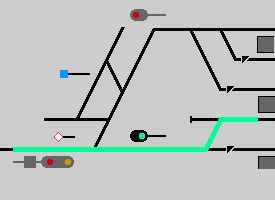
A more common application was the intersection between a mainline and another track. The mainline would usually be protected by derailers, but in case of frequent crossing traffic, shunting signals were added. Disc signals were often used for this purpose, as one signal visible in both directions would be sufficient.
The following example is from Østerport in the 1970s:

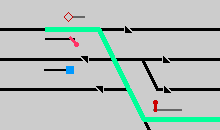
Below, this arrangement - which can still be found in Horsens - is compared to the more widespread concept of later times.
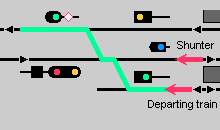
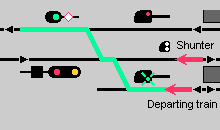
The following example is from Århus in the 1930s. Despite changing track layouts, many of the signals remained in service until the 1990s:
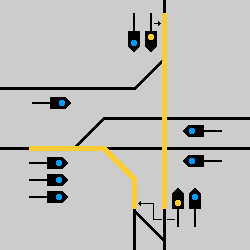
![]()
![]()
Copyright © 2000 Henrik W Karlsson